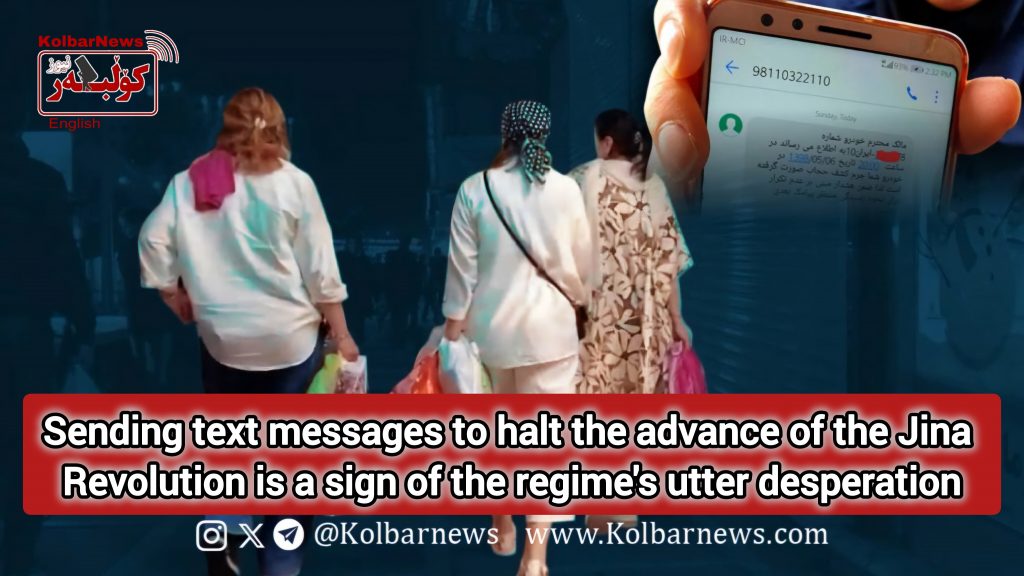
The faction supporting the imposition of compulsory hijab on women and therefore on society has intensified its repressive measures since the beginning of March-April. These defeated traditionalists are attempting to boost the morale of their remaining forces by sending hijab-related text messages, installing surveillance cameras, and using drones for filming. Some newspapers have reported that the Headquarters for Promoting Virtue and Preventing Vice, along with certain minority faction members of the parliament, are behind these actions. It appears they are connected to the (Paydari) Endurance Front.
Compulsory hijab in Iran, which was gradually implemented starting in 1979 and became law in 1984, has become a central issue in the struggle of equality-seeking women and men for freedom, democracy, and a human-centered system. Resistance against this law has become a symbol of defiance against government control over women citizens, and freedom of clothing is only one aspect of this vast confrontation with Islamic reaction, capitalism, and the resulting tyranny. After the 1979 revolution, hijab became one of the ideological policies of the Islamic Republic. Initially, unveiled women were banned from entering government offices, and in 1984, with the passing of the Islamic Penal Code, failure to observe hijab became punishable by fines, flogging, and imprisonment. Resistance against that law and assaults by agents and various mercenaries on women and their male supporters have continued with ups and downs ever since. The scale and intensity of this resistance by free women and men left the ideological regime helpless, and the formation of the infamous morality police in 2006 was a result of this helplessness.
The regime’s repressive focus through the morality patrols prompted women to resist in various ways such as wearing minimal hijab, arguing with officers, refusing to get into the vans, shouting, and asking for help. These clashes continued until Vida Movahed, a day before the protest uprising of workers and the marginalized in December 2017, held a white scarf on a stick and stood on a platform, sparking the Girls of Revolution Street campaign. The White Wednesdays campaign 2018–2019 followed, in which women wore white clothes and shared unveiled photos demanding the abolition of compulsory hijab.
In 2019, the mass uprising of November with the slogan “Reformist, Principalist, it’s over now” elevated the earlier phase of struggles to a new level. Following these movements, the revolutionary uprising of Jina (Mahsa) was born after the death of Jina Amini at the hands of morality police officers in September 2022. This historic uprising challenged the entire Islamic capitalist ruling system, including its deeply rooted patriarchy. In this context, the word “life” in the slogan “Woman, Life, Freedom” targets universal social welfare. When “life” is placed beside “woman” as the engine of struggle against gender apartheid and “freedom” as the liberation of humans from various forms of tyranny, it lays the foundation for linking the “fight for freedom” with the “fight for bread.” The revolutionary uprising of Jina has intertwined the fight for freedom and the fight for livelihood.
When a revolution is the work of the masses, advancing it also falls on the shoulders of the vast majority of society. Society is divided into different classes, and within these movements, each class has and expresses its own demands and needs. This is why we are now witnessing the narrowing of the gap between demands for civil liberties and demands for social and economic justice.
The historic achievement of defeating the “Hijab Law” has been realized through the continuation of these struggles. Now, women as the vanguards and torchbearers of the movement to overthrow the Islamic Republic of executions, poverty, and crime are advancing the Jina revolutionary uprising within society. In the face of the massive and ongoing wave of “Woman, Life, Freedom”, which is emerging from daily life toward creating a revolutionary atmosphere in society, hijab-related text messages, surveillance cameras, and drone filming of citizens are as ineffective as paper blades in a powerful wind and they only strengthen the resolve to continue the struggle.

